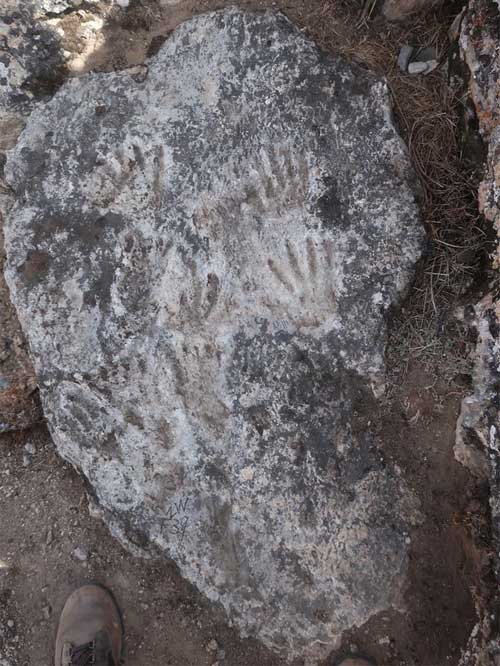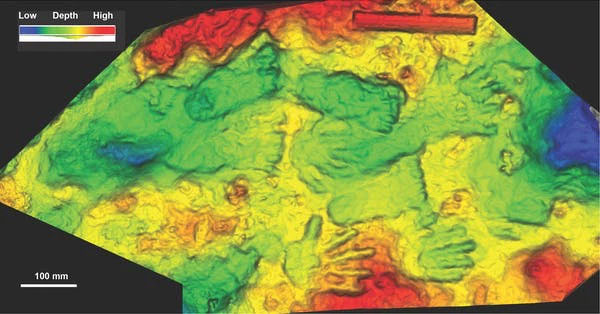The Tibetan Plateau can be called the oldest art museum in history to date.
Fossilized footprints and handprints can still be found here and there around the world. Observing them, modern humans cannot help but be astonished at the similarities between themselves and the anthropoid primates that once roamed the Earth; a five-fingered hand on a cave wall, two footprints in the mud now turned to stone evoke strange emotions.
A multinational team of scientists has discovered handprints and footprints on the Tibetan Plateau. According to the research report, the size of the handprints indicates that children are the creators of these ancient works of art. The team believes this is the first example of rock wall art, even though the drawings on the Tibetan Plateau are not located in a cave.

Ancient handprints and footprints – Works dating back several hundred thousand years.
The limestone used as a “canvas” dates back from 169,000 to 226,000 years Before Christ, making these drawings the oldest works ever discovered. This also serves as evidence that our ancestors, or primates of the genus Homo, had existed on the Tibetan Plateau for a long time. Furthermore, these handprints indicate that one of humanity’s first artists was a child.
Handprints frequently appear in ancient caves. Hands are often used as stencils; an individual would apply color along the contours between the fingers to create artistic masterpieces. Caves in Sulawesi (Indonesia) or El Castillo (Spain) contain the oldest handprints known to humanity.
On the Tibetan Plateau, a team of archaeologists, led by researcher David Zhang, found handprints and footprints preserved in travertine – a type of limestone formed from minerals in natural hot water. When hot, travertine is soft enough to retain hand and foot impressions.
On the stone surface are five handprints and five footprints carefully pressed down. Based on their size, the scientists speculate that they belong to children. These are not mere traces from walking; clearly, this “artwork” was meticulously planned.
The footprints may belong to a 7-year-old prehistoric child, while the handprints are attributed to children around 12 years old. The process of estimating the artists’ ages is based on growth rate data provided by WHO.

3D model of the fossil.
It is uncertain whether the children played with the soft stone while adults fetched hot water for use, but the research team can still affirm that these mischievous children created a piece of art, which they also refer to as “prehistoric graffiti.”
Besides age, the elevation of this museum holding these works is another intriguing factor. The stone slabs began forming in the middle of the Ice Age, and the Tibetan Plateau, with an elevation of 4,200 meters above sea level, makes this artwork both the oldest and created in the most extreme conditions.
It is unclear whether these young artists belonged to the Homo sapiens species or another now-extinct human species. The research team has yet to find answers regarding the origins of the artwork, but they can still classify these handprints and footprints as “art.” They were created carefully and purposefully, evoking images of a group of children playing on a snow-covered plateau.
Despite facing challenging circumstances, anthropoid primates of the genus Homo were still able to find joy in the simplest of actions. The act of playing or seeking joy in creative activities has brought humanity far, and the hope for the future continues to drive us even further.
















































